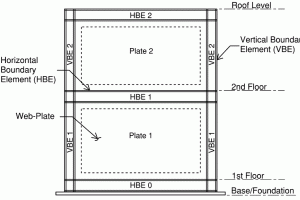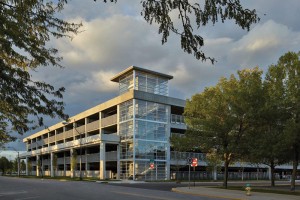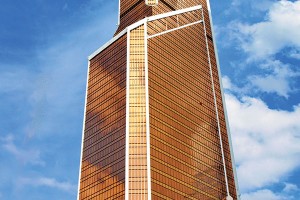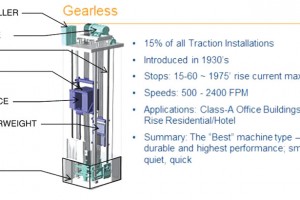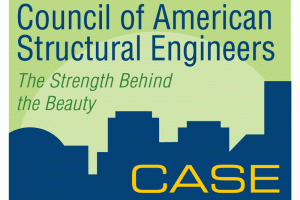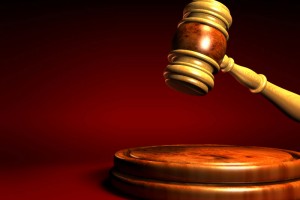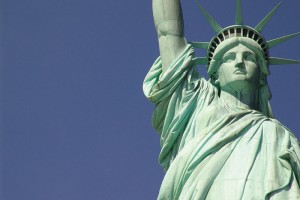The steel plate shear wall (SPSW) presents a viable structural system to resist lateral forces during earthquakes. A, SPSW is a lateral force resisting system (LFRS) composed of a thin steel web-plate bounded by and attached to a surrounding portal frame. As shown in the Figure, the frame beams are termed Horizontal Boundary Elements (HBEs) and the adjacent columns are the Vertical Boundary Elements (VBEs). The thin unstiffened web-plates are expected to buckle in shear at relatively low lateral load levels and develop tension field action for ductility and energy dissipation. …
Monthly Archives : June 2014
American Structurepoint, Inc. was an Award Winner for the Cummins Parking Structure project in the 2013 NCSEA Annual Excellence in Structural Engineering awards program (Category – New Buildings $10M to $30M).
A parking structure that is aesthetically pleasing, built in a historic architecturally iconic downtown, and constructed at 63 percent of the national average cost is hard to achieve, but this is exactly what was accomplished in Columbus, Indiana. …
By all appearances, the small increase in the total number of tall-building completions from 2012 into 2013 is indicative of a return to the prevalent trend of increasing completions each year over the past decade. Perhaps 2012, with its small year-on-year drop in completions, was the last year to register the full effect of the 2008/2009 global financial crisis, and a small sigh of relief can be let out in the tall-building industry as we begin 2014. …
Elevators in high-rise buildings are a necessity. They move people without noticeable waits, transport staff and materials, complement the building design, and enhance the building’s market reputation. Elevators must operate safely and seamlessly.
When buildings are designed, architects enlist the assistance of elevator specialists to determine the proper number, grouping and type of elevators. This approach ensures adequate capacity and provides appropriate waiting times without providing too many elevators. …
The Author recently had a conversation with a structural engineer who has been retired for over fifteen years. During his career, he observed many changes in the practice of structural engineering and the tools available to assist in his practice. The conversation turned to the current state of structural engineering and the many challenges today’s practicing structural engineer faces. He was amazed at the various “balls that need to be kept in the air” to successfully practice engineering and compete in today’s marketplace. …
Tort – the word is familiar (even in a non-pastry context), as are its menacing children: malpractice and negligence. They trigger visceral reactions in many a structural engineer (and lawyer). The word “tort” creeps in and out of the public consciousness, perhaps most often with its partner du jour: “reform.”
We hope to avoid torts. As structural engineers, however, we cannot ignore them, for tort law sets the standard that our professional engineering services are expected to meet or exceed. …
Among its many activities, the SEI Board of Governors (the Board) is engaged in long-term strategic planning. Over the past few years, as part of the planning, the Board has met, conducted surveys, and formed task committees to study specific initiatives. In October 2013, one of the task committees issued A Vision for the Future of Structural Engineers and Structural Engineering: A Case for Change, a Vision for the Future Report that focuses on leadership and innovation skills (www.asce/SEI). Based in part on that report, in April 2014 the Board advanced several initiatives. …
The Statue of Liberty National Monument reopened to visitors July 4, 2013 after a 20-month renovation to upgrade visitor access, egress, safety, and comfort.
Structural improvements included installation of new primary and emergency elevators and two independent, fire-rated, and code-compliant stairs within the pedestal. The improvements include new egress routes that extend through the War of 1812-era Fort Wood surrounding the monument. …

